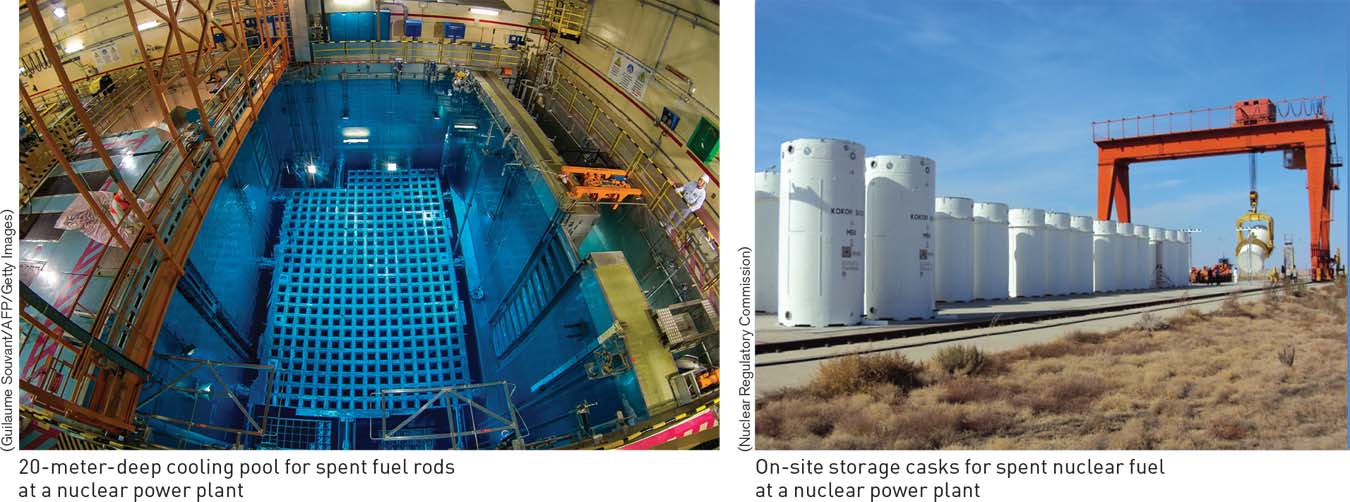12.6 Safe nuclear waste disposal requires long-
low-
high-
Nuclear power plants produce two types of radioactive waste that must be disposed of (see Chapter 9). Low-
371
Over very long periods of time, radioactive waste will completely decay and become harmless. However, most radioactive isotopes take so long to decompose that the timeframe is essentially meaningless in terms of human timescales. Meanwhile, tiny particles and rays of energy are released during active decay, which can damage living tissue, including the DNA blueprint found within the nucleus of all organisms. Safety requires that nuclear wastes be disposed of properly so that they do not contaminate the environment and endanger humans and other organisms.
Technical Challenges
Developing a permanent repository for high-
half-
dry casks Steel and concrete structures used for temporary storage of nuclear waste.
Radioactive isotopes all decay, but at different rates. The time needed for half of a given amount of a radioactive isotope to decay is known as its half-

Social Resistance
One of the biggest challenges to creating a long-

There were also questions concerning the suitability of the Yucca Mountain geology. Fractures in the geologic formation could provide an avenue for radioactive materials to contaminate groundwater below the storage facility. This would be particularly likely if the regional climate became wetter, which is possible during the million-
372

What roles should science, economics, and politics play in choosing a repository for high-
Think About It
Explain what physical properties of nuclear waste preclude its disposal using conventional means.
With the many hazardous wastes to which we may be exposed, why does nuclear waste appear to generate an especially high level of concern among the public?
12.3–12.6 Issues: Summary
Around the world, the amount of municipal solid waste generated is increasing with urban population growth and economic development. Food waste and other biodegradable waste take up valuable landfill space and represent an unnecessary and avoidable problem. Non-
Hazardous waste represents a great threat to the environment—